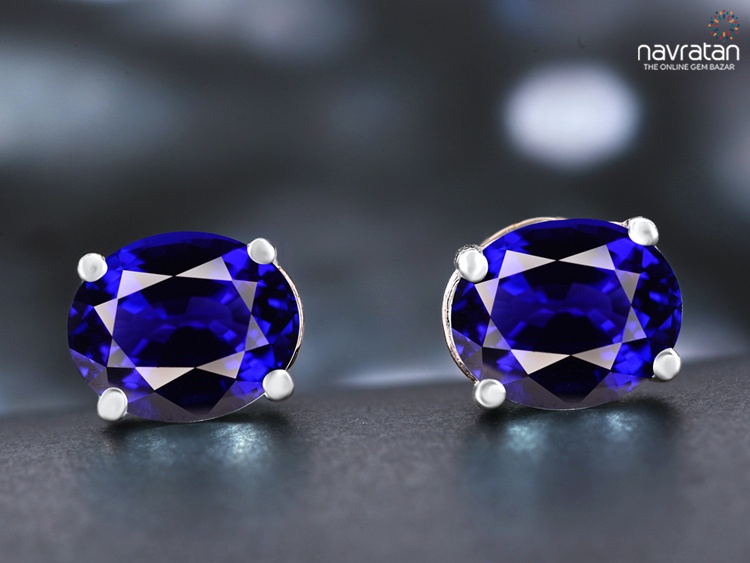Gemstones are known for their beauty and rarity; Tanzanite is no exception. Discovered only in 1967 in Tanzania, this precious stone has quickly become one of the most sought-after gems in the world. In this article, we will explore Tanzanite's history, properties, and uses.
What is Tanzanite?
Tanzanite is a blue-to-violet variety of the mineral zoisite. It is a relatively new gemstone, only discovered in the Mererani Hills of Tanzania in 1967. The name "Tanzanite" was coined by Tiffany & Co., the famous jewelry company that was the first to introduce the stone to the world.
The History of Tanzanite
Tanzanite's discovery is relatively recent compared to other gemstones, and it was in the 1960s the world became aware of this unique gemstone. According to legend, the first Tanzanite stone was discovered by a Masai tribesman named Ali Juuyawatu in 1967. The story goes that Juuyawatu stumbled upon a group of blue crystals while herding his cattle in the Merelani Hills. He collected the crystals and showed them to a local prospector named Manuel de Souza, who recognized their value and realized that they were not sapphires as previously thought, but a new type of gemstone.
The gemstone was named Tanzanite after its country of origin, Tanzania, and its popularity grew quickly in the 1970s when Tiffany & Co. introduced it to the world. Tiffany & Co. recognized Tanzanite's beauty and rarity and became the first major jewelry brand to feature the gemstone in their collections. Since then, Tanzanite has become a favorite among collectors, investors, and jewelry enthusiasts worldwide.
Tanzanite Properties
Hardness: Tanzanite has a hardness of 6.5 to 7 on the Mohs scale, which makes it relatively durable and suitable for everyday wear.
Cleavage: Tanzanite has perfect cleavage in one direction, which can break easily along that plane.
Fracture: Tanzanite has a conchoidal fracture, breaking into curved pieces with smooth surfaces.
Tanzanite has a unique color that ranges from blue to violet, with some stones exhibiting a reddish hue. The intensity of the color depends on the amount of vanadium and chromium present in the stone. Tanzanite is a pleochroic gemstone that appears to change color when viewed from different angles.
The hardness of Tanzanite is 6.5-7 on the Mohs scale, making it suitable for most types of jewelry. However, it is less durable than other gemstones, such as diamonds or sapphires, and should be treated carefully.
The Tanzanite Grading System
Tanzanite is graded according to its color, clarity, and cut. The most valuable Tanzanite stones are well-cut and have a deep blue or violet-blue color, with no visible inclusions. The grading system for Tanzanite is as follows:
AAA: The highest quality of Tanzanite, with a deep blue or violet-blue color, no visible inclusions, and excellent cut.
AA: High-quality Tanzanite with a medium blue or violet-blue color, few visible inclusions, and good cut.
A: Lower quality Tanzanite, with a light blue or violet-blue color, visible inclusions, and fair cut.
Tanzanite Uses
Tanzanite is a popular gemstone used in jewelry. It is often cut into faceted stones and used in rings, earrings, necklaces, and bracelets. Its unique color and rarity make it a prized possession for many collectors.
Tanzanite is also believed to have metaphysical properties. It is said to promote calmness and tranquility and to aid in communication and self-expression.
Tanzanite Mining
Tanzanite is mined exclusively in Tanzania, primarily in the Mererani Hills. The mining process can be dangerous, as the mines are often unstable, and workers may be exposed to hazardous conditions.
To ensure responsible mining practices, the Tanzanian government has implemented regulations on the mining and selling of Tanzanite. The Tanzanite One Group, a company that owns the rights to the largest Tanzanite mine in Tanzania, has also established ethical mining practices, including providing workers with safe working conditions and fair wages.
Tanzanite Imitations
As with any valuable gemstone, there are Tanzanite imitations on the market. The most common limitations include blue topaz, iolite, and sapphire. However, these stones are less valuable and have a different color and properties than Tanzanite.
Tanzanite Care and Maintenance
Tanzanite should be cleaned regularly with a soft cloth, mild soap, and water. It should be stored separately from other jewelry to prevent scratching or damage.
It is also important to note that Tanzanite should not be exposed to extreme heat or cold, as this can cause the


No comments yet